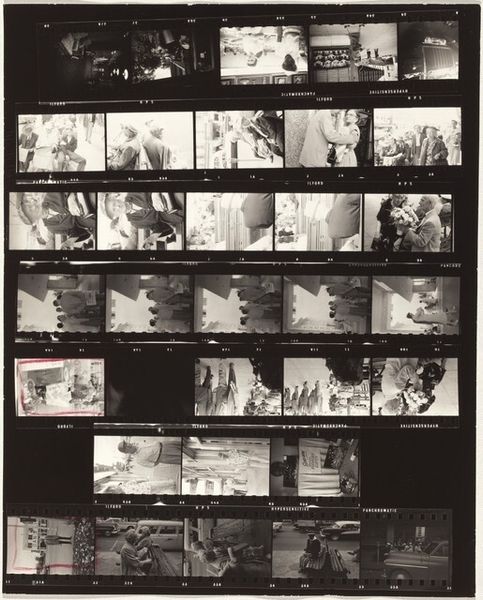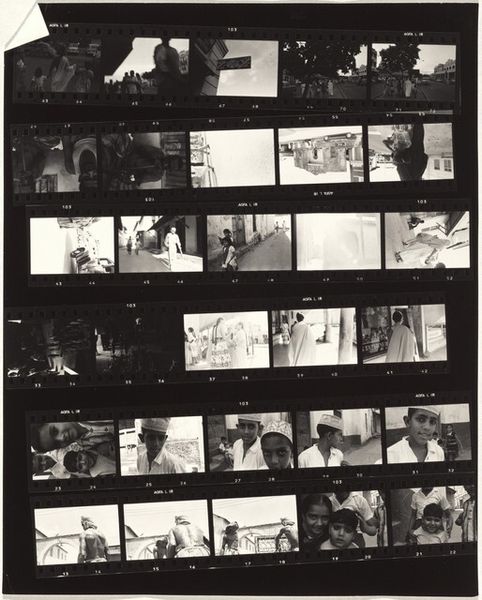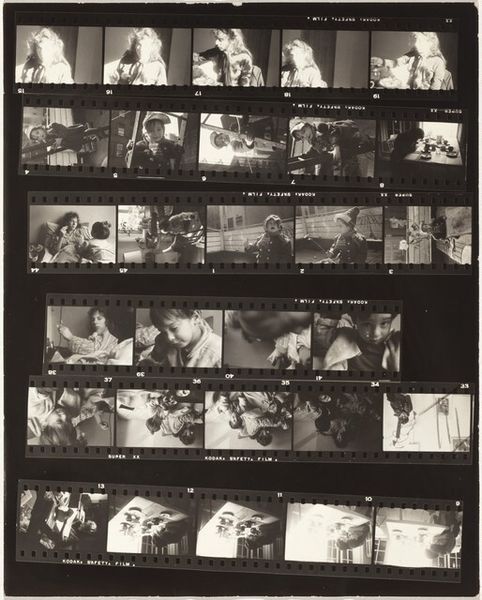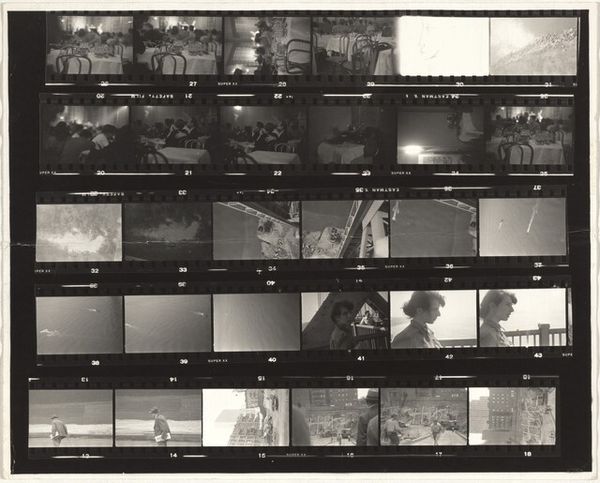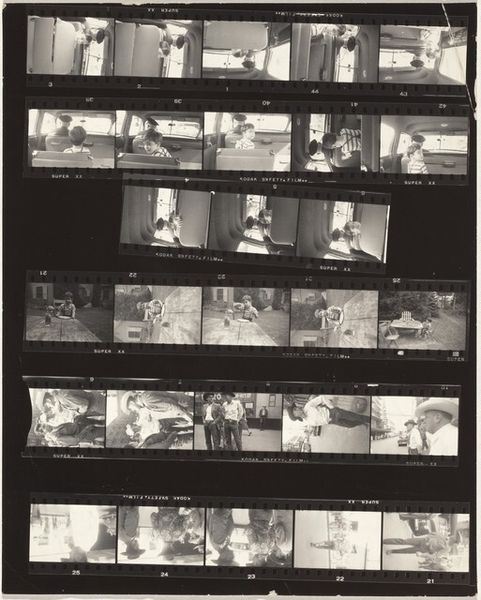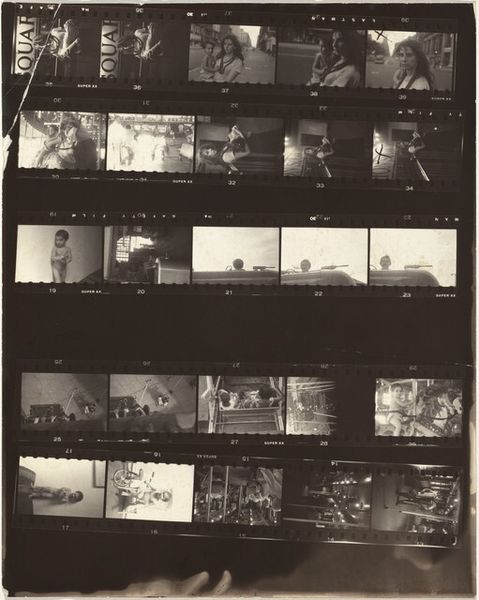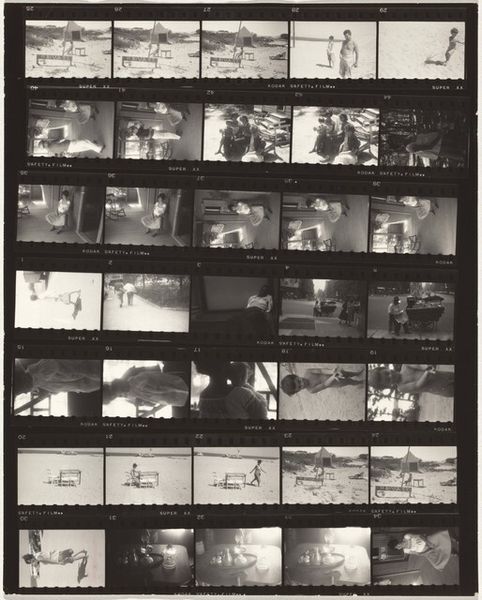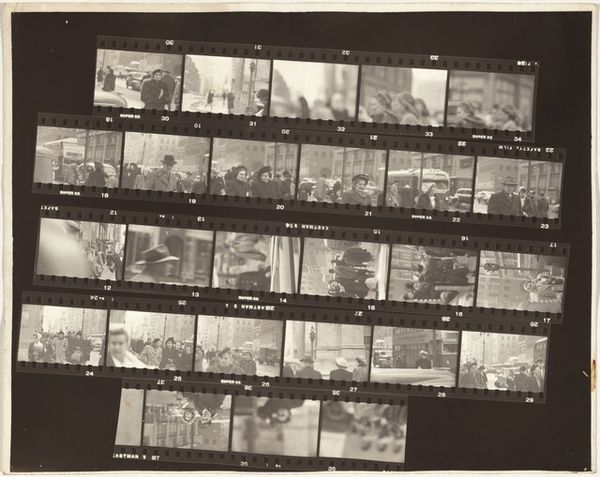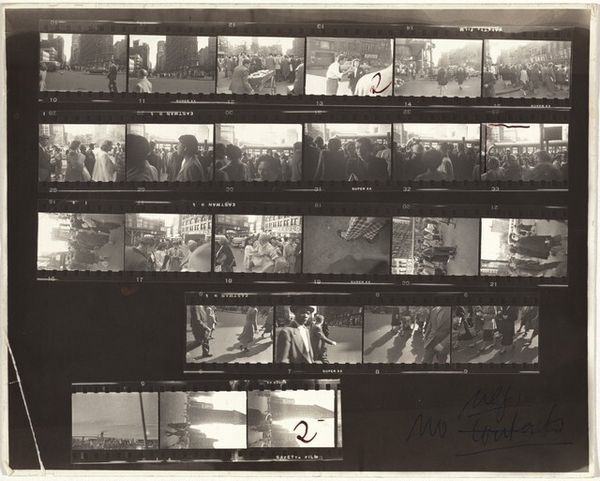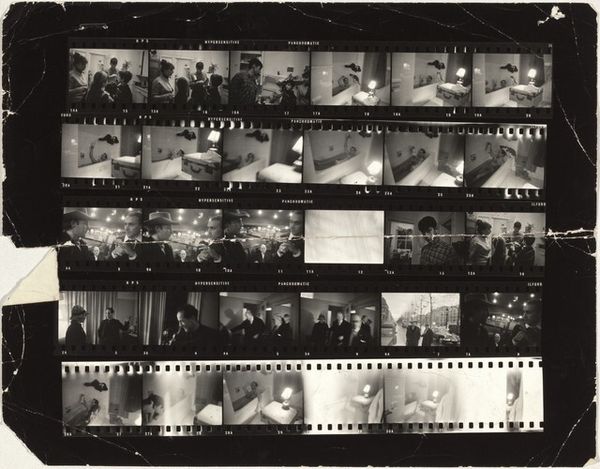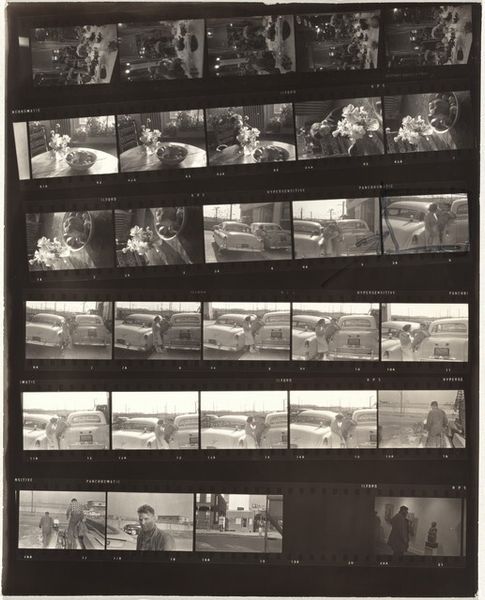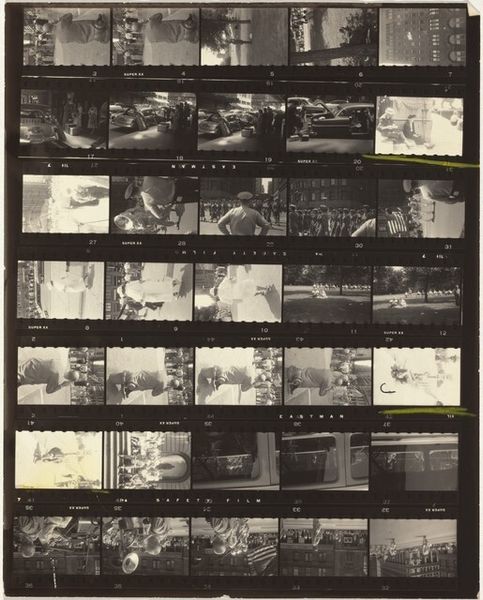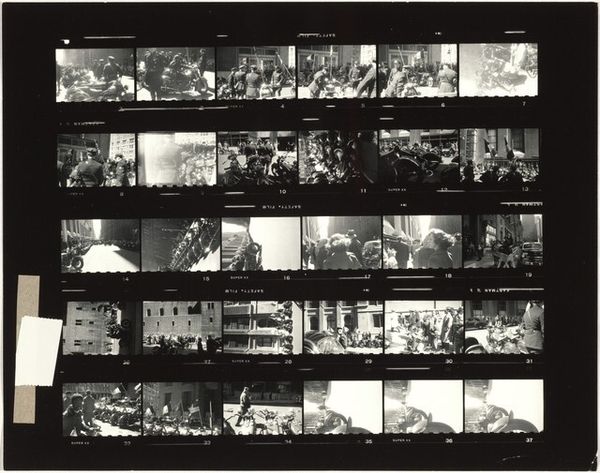
Dimensions: overall: 20.2 x 25.3 cm (7 15/16 x 9 15/16 in.)
Copyright: National Gallery of Art: CC0 1.0
Curator: Looking at Robert Frank's contact sheet "Early New York City no number" created around 1950 or 1951 using a gelatin-silver print, I’m immediately drawn in by its fragmentary quality. It presents not a single image but an array of potential perspectives on urban life. What strikes you first about this piece? Editor: The contact sheet format exposes the artist’s labor, emphasizing his process of framing, composing, and selecting, demystifying the final "decisive moment," I suppose. There’s a rawness to seeing the artist's considerations so laid bare. Curator: Absolutely. In those days, New York was shifting culturally and demographically; Frank captures glimpses of that. Do you see hints of class, gender roles, or immigrant experiences, which characterized the city? Editor: I do, now that you point that out. There’s one row featuring women adorned in hats. Are these socialites of the time or everyday folk aspiring to emulate high fashion through dress? Then there's an egg store... And later there is some labor, almost Taylor-esque factory work. The assembly feels less artistic intention and more product making of life itself, right? Curator: It challenges established hierarchies. His approach in materials and subjects certainly suggests modernism as a style, he questions and captures rather than idealizes urban experience. Editor: The act of assembling them as a “piece of art” suggests its political commentary. It positions the artist less as an objective observer and more as an active interpreter of socio-political constructs. Curator: And for me, Frank invites us to ponder the significance of images left unselected – each frame contributes meaning. What is emphasized in those selected is one question. But even the decision to leave the other images, in a roll and order, invites analysis and attention. Editor: The raw materiality makes for an intriguing commentary on the era’s societal strata as much as the city itself. There is something here beyond an artful intention to expose, more to share. Curator: Very well. Exploring process reveals the art inherent in documentary and social observations, offering new dialogues around consumption and production, literally! Editor: Yes! Well said, perhaps seeing art as less creation, and more production!
Comments
No comments
Be the first to comment and join the conversation on the ultimate creative platform.

